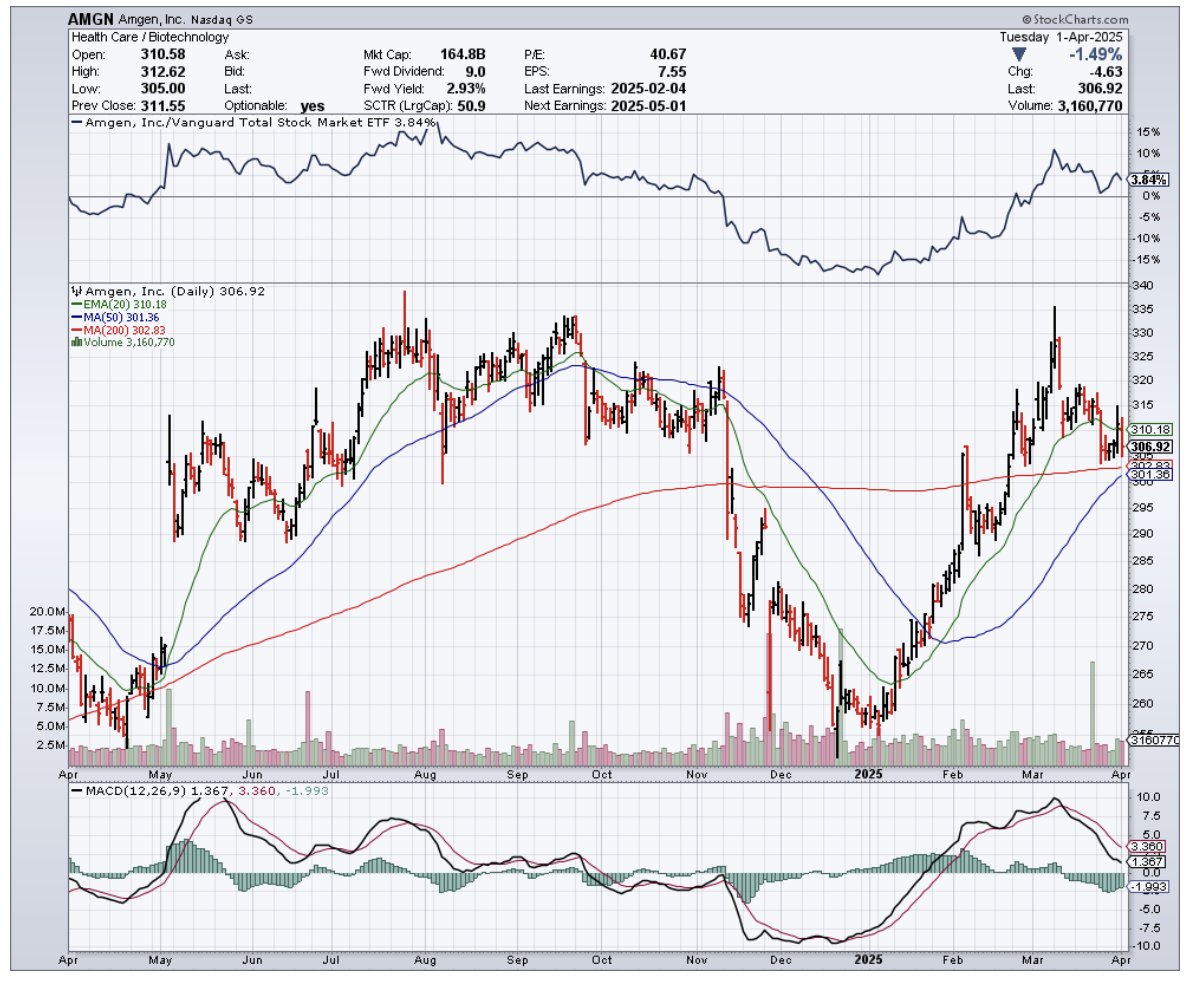The $5 Billion Secret I Spotted In My Doctor's Waiting Room
Last Tuesday, my orthopedist kept me waiting 40 minutes past my appointment time – just long enough for me to witness what Wall Street's finest analysts have somehow managed to miss.
As I sat thumbing through a dog-eared copy of Golf Digest from 2018, I counted eight different patients called in for Prolia injections.
By the sixth one, I'd put down the magazine and started taking notes on my phone. By the eighth, I was already mentally calculating position sizes for my portfolio.
"You know what you just saw?" my doctor asked when he finally saw me. "That's Amgen's cash cow – $5.4 billion in sales last year for a twice-yearly injection. And guess what? Half these patients will be on it for life."
When I pressed him on competing drugs, he just laughed. "Their sales reps bring the best lunches. But seriously, it works, patients tolerate it, and insurance covers it. In medicine, that's the holy trinity."
While half of Wall Street hyperventilates about which pharmaceutical giant will dominate the weight loss market, and the other half chases whatever shiny tech story came out this morning, they're all missing Amgen (AMGN) – a money-printing machine trading at just 14.9 times earnings with a 3.1% dividend that grows like clockwork.
I've been investing in pharmaceutical companies since I covered Merck's (MRK) explosive growth for The Economist in the late 1970s, and one lesson has remained constant: the market consistently underestimates companies with proven track records during transitions.
Amgen, trading at $307, is a textbook example of this phenomenon right now.
The headline numbers don't initially spark excitement – management is guiding for modest 5% revenue growth and 4% EPS growth this year. But having analyzed hundreds of pharma companies over five decades, I know these conservative guidance figures are often the prelude to significant outperformance.
What matters more is their $5.9 billion R&D investment last year (up 25% from 2023) and the underappreciated potential of their pipeline.
Look beyond the surface, and you'll find Amgen has quietly built something remarkable. While everyone's fixated on Novo Nordisk’s (NVO) Ozempic and Wegovy, few have noticed that Amgen's existing product portfolio is delivering solid results.
Inflammation drug TEZSPIRE grew 71% year-over-year and is approaching the $1 billion annual sales milestone. Oncology drug BLINCYTO jumped 41%, and their cholesterol drug Repatha, combined with bone health treatment EVENITY, delivered $1 billion in year-over-year growth.
The real hidden value lies in Amgen's obesity program. The anti-obesity market that barely existed a few years ago has exploded to $2.2 billion and is projected to grow at 30% annually through 2030.
Eli Lilly (LLY) and Novo Nordisk have seen their market caps soar into the stratosphere on the strength of their GLP-1 drugs, but Amgen's market valuation doesn't reflect any meaningful potential from MariTide, their Phase 3 obesity candidate.
This reminds me of 2012 when I began accumulating Regeneron (REGN) while the market was completely missing the potential of Eylea. That position delivered a 580% return over the following three years.
What's particularly attractive about Amgen is the margin of safety it offers. With a 3.1% dividend yield (backed by a manageable 45% payout ratio and 13 consecutive years of growth), a forward P/E of just 14.9, and a fortress-like 46.3% operating margin, you're being paid to wait for the pipeline to deliver.
The company has been aggressively paying down the debt from its Horizon Therapeutics acquisition, reducing long-term obligations by $6.6 billion last year alone.
Their financial discipline stands in stark contrast to many of the speculative biotech plays I've been pitched recently. At a dinner with venture capitalists in Boston last week, I listened to presentation after presentation about pre-clinical assets with billion-dollar valuations and no revenue in sight.
Meanwhile, Amgen generated $33.4 billion in sales last year with industry-leading EBITDA margins of 45%.
Of course, there are risks. The upcoming patent expiration of osteoporosis drug Prolia this year creates a revenue gap that needs filling.
The Trump administration's Department of Government Efficiency (DOGE) initiative could potentially impact FDA testing labs, slowing approval timelines. But these concerns are already priced into the stock, while the potential upside from MariTide and other late-stage candidates is not.
Having navigated multiple market cycles since the 1970s, I've learned that the best investments often come when solid companies are temporarily overlooked during market rotations. Amgen remains a proven pharmaceutical innovator with strong cash flows, growing dividends, and a promising pipeline that offers compelling value.
I started building a substantial position in Amgen at around $260 during the post-election pharmaceutical sell-off and have continued to accumulate shares on weakness.
With a reasonable valuation, strong pipeline optionality, and dividend income that beats 10-year Treasury yields, Amgen represents the kind of steady compounder that has consistently outperformed over full market cycles.
In my decades of investing, I've found that buying excellent businesses during periods of unwarranted pessimism is the closest thing to a guaranteed winning formula.
With Amgen, you're essentially being paid a 3.1% annual dividend to own a company that could deliver a major surprise in the obesity market – the same market that transformed Novo Nordisk and Eli Lilly into two of the world's most valuable companies.
Sometimes the smartest investments are like colonoscopies – nobody's excited to talk about them at parties, but they'll save your financial health in the long run.

